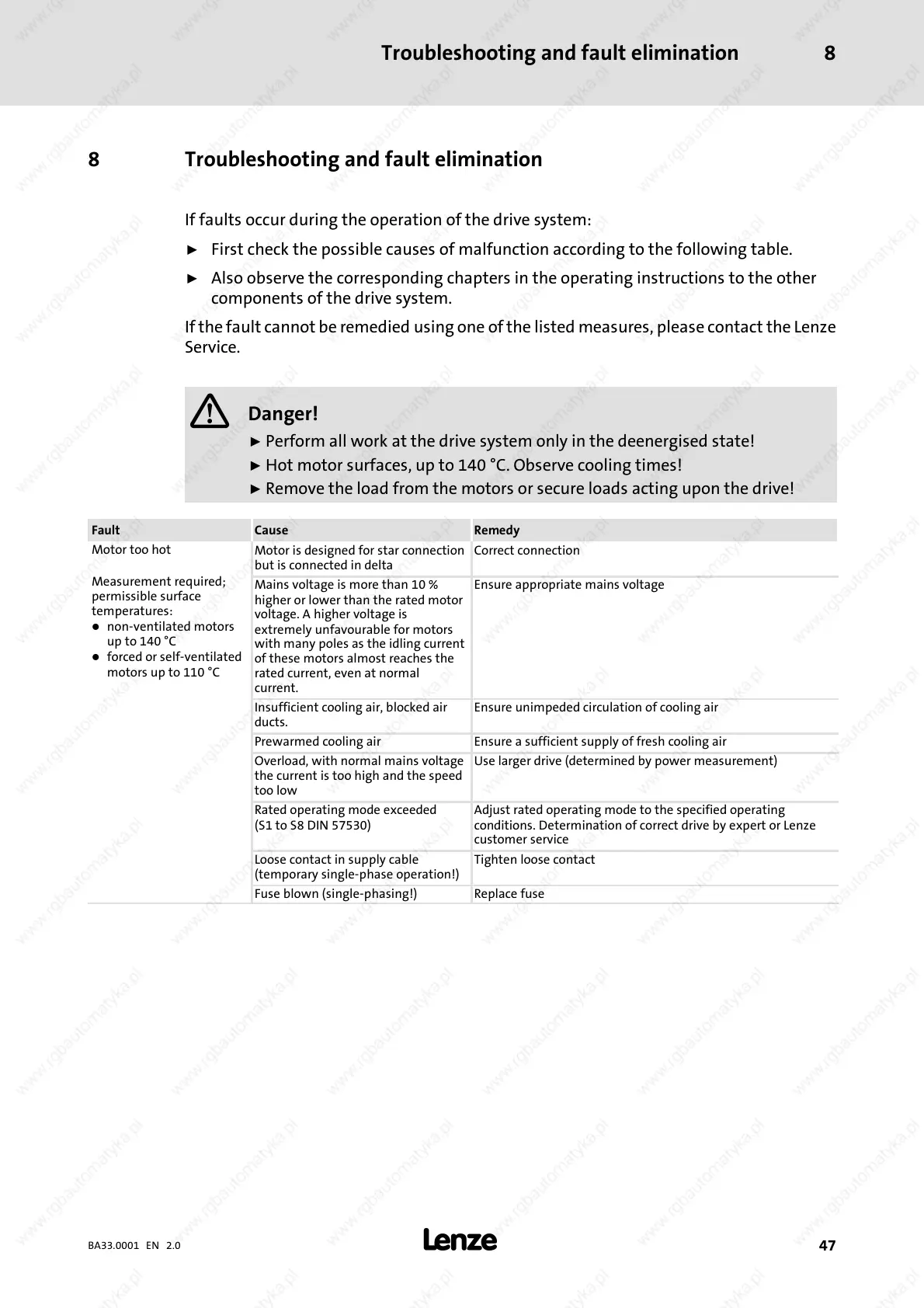Troubleshooting and fault elimination 8
47
BA33.0001 E N 2.0
8 Troubleshooting and fault elimination
If faults occur during the operation of the drive system:
ƒ
First check the possible causes of malfunction according to the following table.
ƒ
Also observe the corresponding chapters in the operating instructions to the other
components of the drive system.
If the fault cannot be remedied using one of the listed measures, please contact the Lenze
Service.
Danger!
ƒ
Perform all work at the drive system only in the deenergised state!
ƒ
Hot motor surfaces, up to 140 °C. Observe cooling times!
ƒ
Remove the load from the motors or secure loads acting upon the drive!
Fault Cause Remedy
Motor too hot
Motor is designed for star connection
but is connected in delta
Cor rect connection
Measurement required;
permissible surface
temperatures:
z
non-ventilated motors
up to 140 °C
z
forced or self-ventilated
motors up to 110 °C
Mains voltage is more than 10 %
higher or lower than the rated motor
voltage. A higher voltage is
extremely unfavourable for motors
with many poles as the idling current
of these motors almost reaches the
rated current, even at normal
current.
Ensure appropriate mains voltage
Insufficient cooling air, blocked air
ducts.
Ensure unimpeded circulation of cooling air
Prewarmed cooling air Ensure a sufficient supply of fresh cooling air
Overload, with normal mains voltage
the current is too high and the speed
too low
Use larger drive (determined by p ower measurement)
Rated operating mode exceeded
(S1 to S8 DIN 57530)
Adjust rated operating mode to the specified operating
conditions. Determination of correct drive by expert or Lenze
customer service
Loose contact in supply cable
(temporary single-phase operation!)
Tighten loose contact
Fuse blown (single-phasing!) Replace fuse

